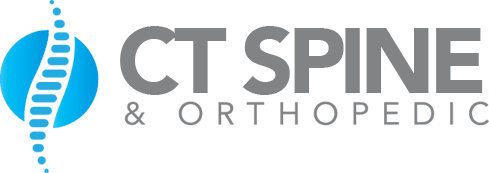Cervical hernia, a common condition, impacts life quality significantly. It’s characterized by neck disc displacement, causing symptoms ranging from mild discomfort to severe neurological issues. Influenced by age, lifestyle, and genetics, understanding this ailment’s intricacies, causes, and treatment strategies is crucial. This exploration provides essential insights for patients and healthcare professionals, helping manage cervical hernia effectively.
Understanding Cervical Hernia
Cervical hernia, a type of disc hernia, is a condition where the inner substance of the intervertebral disc protrudes through its outer layer in the neck area, causing nerve compression and pain. Despite not always being visibly noticeable, cervical hernias present symptoms such as neck discomfort, arm numbness or weakness, and coordination difficulty. Contrary to the common misconception, hernias including cervical ones, don’t heal without treatment and may lead to complications such as chronic pain, motor function loss, or serious neurological issues. Hence, professional medical evaluation is vital for accurate diagnosis and treatment.
Causes of Cervical Hernia
Degenerative disc disease or severe arthritis, which weaken the cervical spine, can cause a cervical hernia. Lifestyle factors, such as smoking, obesity, or intense physical activities, increase these risks, promoting hernia development in the cervical area.
Underlying Medical Conditions
Age, injury, and specific genetic disorders can cause a cervical hernia. Genetic predisposition, particularly linked to hernia history in the family, escalates the risk. Genes related to collagen production and metabolism affect the structural stability of intervertebral discs, increasing herniation susceptibility. Comorbidity factors like osteoporosis and rheumatoid arthritis worsen the risk by reducing bone density and inflaming joints respectively. Metabolic disorders such as diabetes can impair disc nutrition, accelerating disc degeneration and potentially causing cervical hernia. Recognizing these conditions aids in effective prevention and treatment.
Lifestyle and Risk Factors
Underlying medical conditions, lifestyle choices, and environmental factors can influence cervical hernia development. Key elements are physical activity, diet, smoking, and obesity. Excessive exercise or heavy lifting particularly without proper training can exert undue pressure on the cervical spine, precipitating herniation. Nutrient-deficient diets, especially lacking in calcium and vitamin D, can weaken the spine and induce hernia. Smoking, by reducing spinal oxygen levels, accelerates disc degeneration and hernia risk. Obesity, on the other hand, puts additional load on the cervical spine, potentially leading to hernia.
Common Symptoms
Cervical hernia symptoms range from mild to severe, including neck pain, arm numbness, and hand or finger weakness. These arise due to herniated disc pressure on nerve roots or the spinal cord, disrupting normal nerve function. Other symptoms include headaches, especially at the skull’s back, shoulder pain, and a sharp or burning sensation radiating from arm to fingers.
Pain management involves physical therapy, medication, and lifestyle modifications like maintaining healthy weight and good posture. Symptoms’ intensity and duration vary among patients, with some experiencing episodic symptoms and periods of relief followed by acute flare-ups, while others suffer persistent discomfort. Symptoms can also progress over time, starting as mild or occasional discomfort and becoming more severe or frequent. Accurate symptom communication aids healthcare providers in treatment decision making.
Diagnosing Cervical Hernia
Cervical hernia diagnosis demands a dual approach: clinical assessment and radiological examinations. Radiological tests like MRI and CT scans are essential to pinpoint herniation location and extent. These tests provide clear cervical spine images, exposing any spinal cord or nerve root impingements. Genetic predisposition exploration, another key diagnostic step, uncovers inherent spinal weaknesses that may lead to cervical hernia. This includes familial tendencies towards degenerative disc disease, signaling a higher herniation risk. The diagnosis process includes: symptom severity and neurological function clinical examination, herniation location and evaluation through MRI and CT scans, genetic predisposition exploration for potential spinal weaknesses, and diagnosis confirmation from clinical and radiological findings. This accurate diagnosis informs an effective treatment plan, reducing further complication risks.
Risk Factors Involved
Cervical hernia risk factors include genetic predisposition and external influences like occupational hazards. Genetic predisposition, influenced by several genetic factors such as cervical spine structural integrity and muscle and connective tissue strength, increases cervical hernia risk. A family history of cervical hernias also elevates this risk.
Occupational hazards contribute significantly to cervical hernia occurrence. Professions involving heavy lifting, repetitive neck movements, or prolonged sitting or standing strain the cervical spine. This strain leads to cervical disc wear and tear, escalating herniation risk.
Other risk factors include age, sex, smoking, obesity, and a sedentary lifestyle. Understanding these factors is key to creating cervical hernia prevention strategies and effective management plans.
Traditional Treatment Methods
Addressing cervical hernia requires a focus on traditional treatment methods. These methods consist of physical therapy, rest, lifestyle changes, alternative therapies, and herbal remedies.
Physical therapy comprises specific exercises to strengthen neck and shoulder muscles, improve posture and increase flexibility. It is guided by a physiotherapist and often serves as a long-term management approach.
Rest and lifestyle adjustments are crucial. Rest relieves herniated disc pressure, and lifestyle changes like maintaining healthy weight and avoiding heavy lifting manage symptoms.
Alternative therapies such as acupuncture, chiropractic adjustments, and massages can assist in pain management associated with cervical hernia.
Herbal remedies with anti-inflammatory properties, such as turmeric and ginger, can alleviate symptoms.
Traditional methods can enhance life quality and provide relief for cervical hernia patients. However, treatment effectiveness can vary based on each individual’s condition.
Modern Surgical Procedures
In modern medicine, when traditional treatments fail, surgical procedures such as Anterior Cervical Discectomy and Fusion (ACDF) and Artificial Disc Replacement (ADR) effectively treat cervical hernia. ACDF removes and fuses the herniated disc with adjacent vertebrae, restoring spinal stability. ADR replaces the herniated disc with a synthetic one, maintaining spinal mobility. These procedures use minimally invasive techniques, reducing surgical trauma, hospital stay, and recovery time.
However, these procedures carry risks including infection, nerve damage, fusion failure, or artificial disc failure. Surgery may not fully relieve symptoms, especially in patients with multiple herniated discs. Therefore, the decision to undergo surgery requires careful consideration of risks and benefits, with patient consultation regarding expected outcomes and potential complications.
Recovery Process Post-Surgery
Post-surgery recovery from a cervical hernia requires adherence to prescribed therapeutic exercises and medication routines, crucial for optimal surgical outcomes and spinal integrity restoration. This phase is marked by physical rehabilitation and pain management strategies for smooth healing.
Pain management, involving pharmacological and non-pharmacological measures, is vital post-surgery to minimize discomfort and enhance mobility. Emotional healing, addressed through counseling and family and friends’ support, is significant.
Key factors in the recovery phase include:
- Compliance with medication routines
- Regular surgeon visits
- Balanced physical activity and rest
- Emotional support and counseling, if needed
Physical Therapy for Recovery
Physical therapy is crucial post cervical hernia surgery, focusing on mobility restoration, neck muscle strengthening, and functionality enhancement. The therapy initiates with gentle movements, avoiding strain to the surgical site. Posture correction is integral, relieving neck and spinal stress. Techniques like mirror therapy and biofeedback rectify posture, fostering healthier cervical spine alignment. Targeted exercises under professional guidance boost muscle endurance and flexibility, preventing future herniation. Resistance training strengthens neck muscles, while aerobic exercises promote cardiovascular health for overall recovery.
Lifestyle Adjustments
Post-cervical hernia surgery requires key lifestyle adjustments to reduce recurrence risk and promote recovery. This process extends beyond physical healing to include diet and stress management.
Key modifications include:
- Diet: A balanced diet of fiber, lean protein, and essential vitamins aids healing and overall health. Hydration and constipation avoidance are crucial as strain can worsen the condition.
- Exercise: Low-impact activities like walking and swimming enhance muscle strength and mobility without pressuring the neck.
- Stress Management: Stress intensifies pain and slows healing. Techniques such as meditation, deep breathing exercises, and yoga are effective.
- Posture: Proper posture during work and sleep relieves cervical spine pressure and lowers hernia recurrence risk.
These changes, combined with medication and regular check-ups, foster optimal recovery and minimize post-surgery complications.
Preventive Measures
Regular physical activity, ergonomic workstations, and maintaining a healthy weight are key in cervical hernia prevention. Exercise strengthens spinal support muscles, improving flexibility, enhancing blood circulation, and promoting weight management. All these factors reduce cervical hernia risk. Correct body alignment, facilitated by an ergonomic work environment, reduces cervical spine strain. This alignment is crucial not just while standing, but also when sitting, particularly when using devices. These measures reduce cervical hernia risk, improve spinal health and enhance life quality.
Living With Cervical Hernia
Cervical hernia management involves symptom control and lifestyle adjustments. Key interventions can mitigate pain, improve mobility, and lower hernia complication risks.
Living with a cervical hernia may necessitate:
- Regular physical therapy for neck and upper body muscle strengthening to support the cervical spine and reduce herniated disk pressure.
- Utilization of medication, such as NSAIDs and muscle relaxants, to control pain and inflammation.
- Lifestyle modifications like maintaining a healthy weight, good posture adherence, and strenuous physical activity avoidance to prevent condition worsening.
- Assistive device use, like cervical collars, to limit neck movement and provide support.
Emotionally coping with cervical hernia involves managing feelings like frustration, fear, and depression. Professional mental health support, stress management techniques, and support network involvement can help manage these emotional challenges. Remember, you’re not alone; help is available for a fulfilling life despite your condition.
Frequently Asked Questions
Whats the Average Age Group Most Affected by Cervical Hernia?
The age group most affected by cervical hernia typically spans from 30 to 50 years. Risk management for this health condition relies on hernia prevention strategies and exercise impacts.
Is Cervical Hernia Considered a Genetic Disorder?
Cervical hernia, not a genetic disorder, primarily originates from strain or injury. Management and symptom alleviation can be achieved through cervical hernia exercise and therapy.
Are There Any Specific Dietary Recommendations for Cervical Hernia Patients?
For patients with cervical hernia, a high-fiber diet is typically recommended to lessen strain during bowel movements. Post-operative nutrition should focus on high-protein intake for effective healing. Consultation with a healthcare professional is essential for specific hernia symptom management.
Can a Cervical Hernia Affect Pregnancy or Childbirth?
Indeed, a cervical hernia may influence pregnancy or childbirth. Careful evaluation by a healthcare professional is crucial for managing hernia during pregnancy, particularly for assessing its potential impact on fertility and childbirth complications.
How Does Cervical Hernia Influence Mental Health?
Cervical hernia-induced chronic pain significantly influences mental health, necessitating pain management strategies for emotional resilience and prevention of anxiety and depression.



